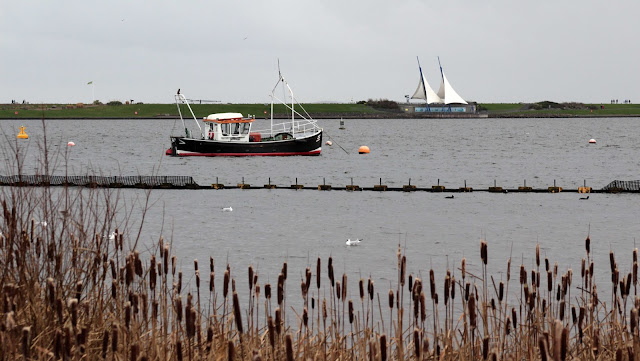 |
Robert Falcon Scott,
from Wikipedia commons |
It always struck me as odd that Roath
Park Lake
in Cardiff had
a lighthouse in it, until I read the plaque:
To the memory of Captain
R.F. Scott C.V.O., D.S.O., R.N. and his faithful companions Captain L.E.G. Oates, Lieut. H.R. Bowers R.I.M., Dr E.A. Wilson, and Petty Officer Edgar
Evans R.N. who sailed in the S.S. Terra Nova from the port of Cardiff June 15th
1910, to locate the South Pole; and, in pursuit of that great and successful
scientific task, laid down their lives in the Antarctic regions. March 1912.
Britons all and very gallant gentlemen. Erected and presented to the City of Cardiff by F.C. Bowring
Esq., J.P. 1915.
Most people are familiar with Scott’s sad tale, I
think: after an heroic struggle, he and his team reached the South Pole on 17
January 1912 only to discover that the Norwegian team, led by Roald Admunsen,
had beaten them to their goal and then, on their 1500km return journey across
the ice, Scott and his four comrades all perished from a combination of hunger
and the extreme conditions. What you may not realise is Cardiff’s connection to the story.
 |
| SS Terra Nova, Evening Express, 13 October 1910 |
Cardiff was Scott and his team’s UK departure point for the
expedition. They arrived at Roath Basin in Cardiff
docklands, aboard their whaling ship the SS Terra
Nova, on 10 June 1910 to complete their final preparations for the voyage,
and the folk of Cardiff
did them proud. According to information from the Welsh National Museum website,
300 tons of Crown Patent Fuel, 100
tons of steam coal and 500 gallons of engine and lamp oil were donated by Welsh
coal companies. All the cooking utensils were given by the Welsh Tin Plate
Company of Llanelli and even Scott's sleeping bag was bought with funds raised
by the County School in Cardigan. In addition to
support in kind, a further £2,500 was raised in Cardiff, more than from any other city.
In fact, local supporters were so generous that Scott
named Cardiff
the Terra Nova’s home port and it was
to this city that the ill-fated expedition returned on 14 June 1913, almost
three years to the day after its departure.
 |
| Photograph taken at the South Pole by Henry Bowers (using a piece of string to operate the camera shutter). From left to right: Oates, Bowers and Wilson (both seated), Scott and Evans. Photograph from Leonard Huxley (ed.), 'The Return from the Pole' in Scott's Last Expedition, Volume 1, Dodd, Mead and Company, New York, 1913. |
The connection with Cardiff
arose through E.R.G.R. (Teddy) Evans, a young navy Lieutenant who had initially
planned his own Antarctic expedition but eventually joined Scott as his
second-in-command and captain of the Terra
Nova. Evans brought with him the backing of William Davies, influential
editor of the Western Mail newspaper,
as well as the financial support of leading Cardiff ship-owners William Tatem and Daniel
Radcliffe. Evans also convinced fellow Welshman David Lloyd George, then
Chancellor of the Exchequer, to provide the sizable sum of £20,000 in government
support. Evans went on to a highly successful naval career, and was recognised for his achievements by
his elevation to the peerage: he became 1st Baron Mountevans in 1945.
 |
| Edgar Evans, Cambria Daily Leader, 11 February 1913 |
Obviously
then, he was not the Evans who died with Scott on their return journey from the
South Pole. That was another Welshman, Edgar Evans, the expedition’s Chief
Petty Officer. Edgar Evans first met Scott when he began his naval service
aboard the HMS Majestic in 1899 –
Scott was then serving as a torpedo lieutenant on the same ship – and Evans travelled
with Scott on his earlier polar expedition in 1901-4, so he was a logical choice
to join the Terra Nova expedition. It
seems he was a bit of a character, nearly missing the Terra Nova’s departure south from New Zealand because he was drunk
and fell into the water when trying to board the ship. Sadly, he was the first to die on the return
journey from the South Pole.
Cardiff’s connection with Scott
and the Terra Nova expedition are
commemorated in many places around the city. As well as the lighthouse and a
garden memorial at Roath Park Lake (the café nearby is also called Terra Nova),
there is a sculpture in Cardiff Bay, depicting Scott and the faces of the four
men who died with him, and a large outdoor exhibition providing interesting
photos and information about the expedition.
There is even a Captain Scott Society, which meets annually to ‘commemorate the association of the City with
Scott's last expedition and to encourage the spirit of adventure that he
inspired’. Now that’s an aim I can heartily endorse!
 |
| Scott Memorial sculpture, at Cardiff Bay |
 |
| The sails in the background mark the site of the Scott exhibition, Cardiff Bay |







No comments:
Post a Comment